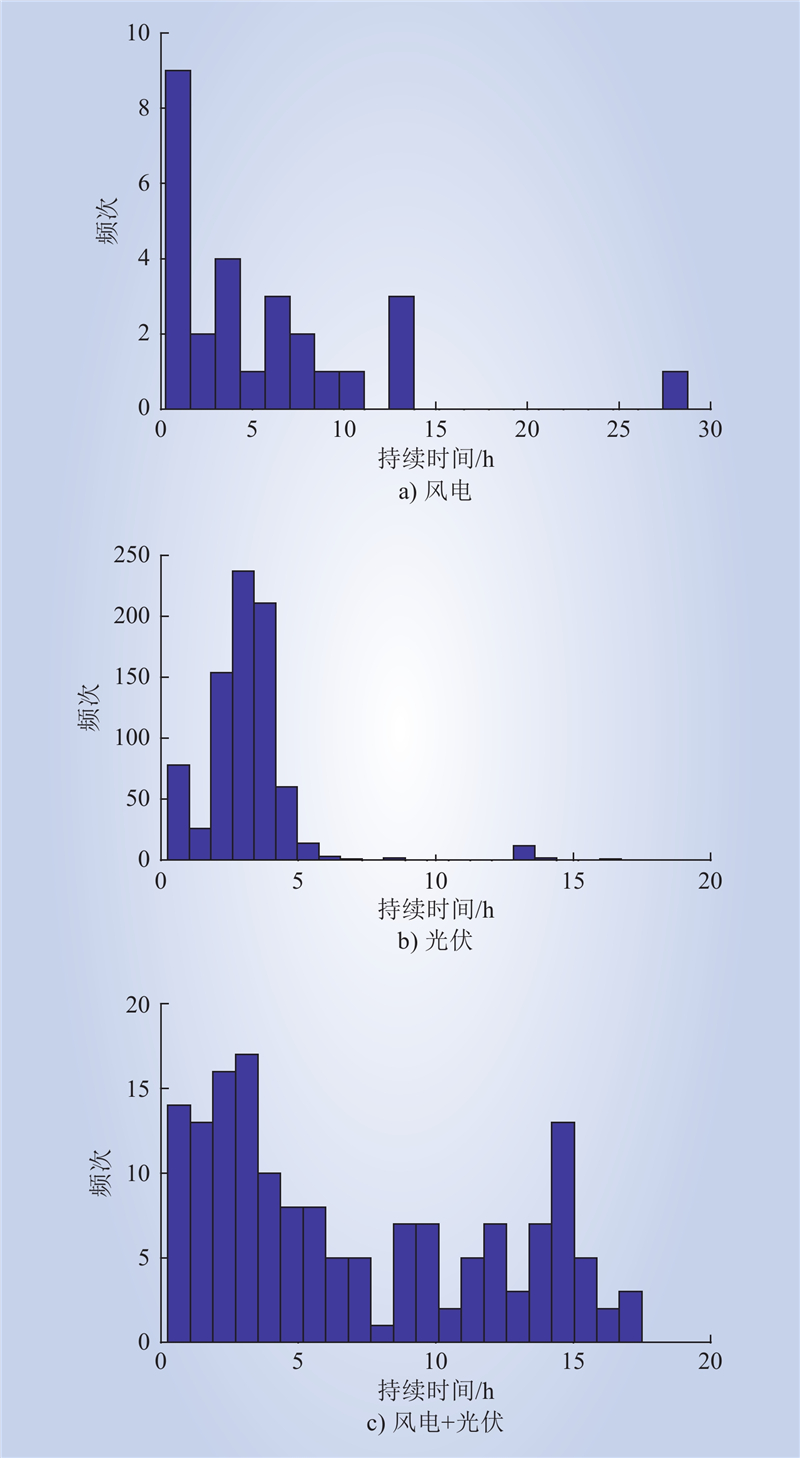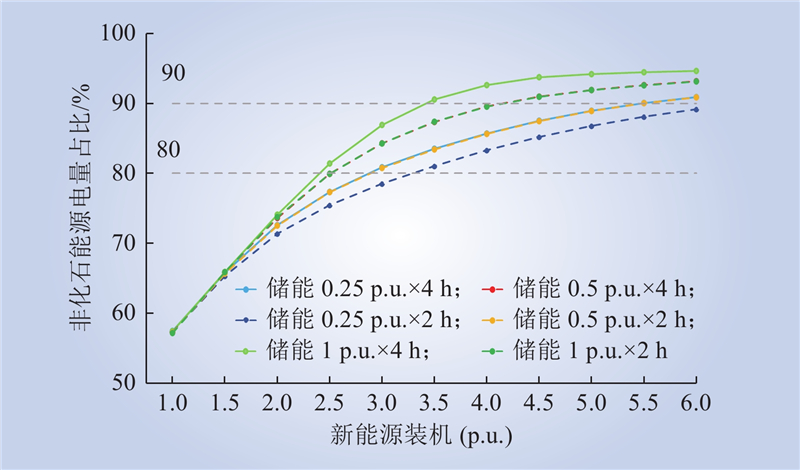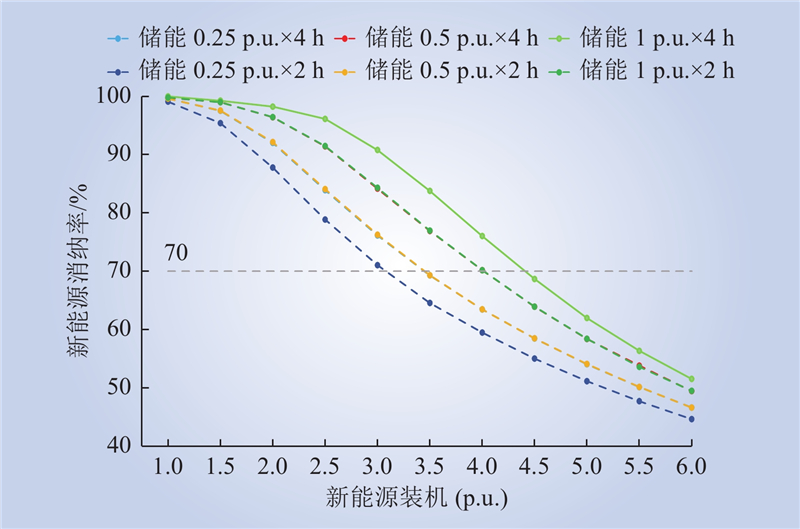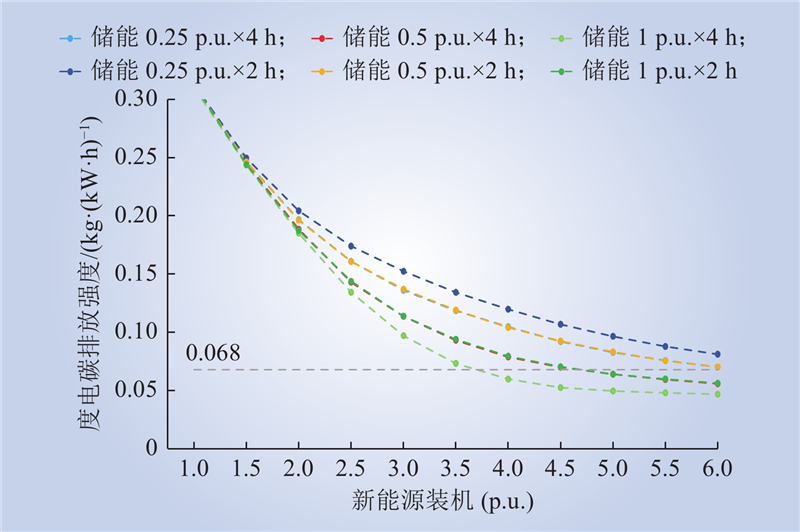| 1 |
国务院. 2030年前碳达峰行动方案[R]. 北京: 国务院, 2022.
|
| 2 |
国家能源局. 新型电力系统发展蓝皮书(征求意见稿)[R]. 北京: 国家能源局, 2023.
|
| 3 |
石文辉, 白宏, 屈姬贤, 等. 我国风电高效利用技术趋势及发展建议[J]. 中国工程科学, 2018, 20 (3): 51- 57.
DOI
|
|
SHI Wenhui, BAI Hong, QU Jixian, et al. Technology trend and development suggestions for wind power efficient utilization in China[J]. Strategic Study of CAE, 2018, 20 (3): 51- 57.
DOI
|
| 4 |
文云峰, 杨伟峰, 汪荣华, 等. 构建100%可再生能源电力系统述评与展望[J]. 中国电机工程学报, 2020, 40 (6): 1843- 1856.
|
|
WEN Yunfeng, YANG Weifeng, WANG Ronghua, et al. Review and prospect of toward 100% renewable energy power systems[J]. Proceedings of the CSEE, 2020, 40 (6): 1843- 1856.
|
| 5 |
国家能源局. 2020年全国电力工业统计数据[R]. 北京: 国家能源局, 2021.
|
| 6 |
财政部, 国家发展改革委, 国家能源局. 关于促进非水可再生能源发电健康发展的若干意见(财建〔2020〕4号)[R]. 北京: 财政部, 国家发展改革委, 国家能源局, 2020.
|
| 7 |
周原冰, 杨方, 余潇潇, 等. 中国能源电力碳中和实现路径及实施关键问题[J]. 中国电力, 2022, 55 (5): 1- 11.
|
|
ZHOU Yuanbing, YANG Fang, YU Xiaoxiao, et al. Realization pathways and key problems of carbon neutrality in China's energy and power system[J]. Electric Power, 2022, 55 (5): 1- 11.
|
| 8 |
单葆国, 冀星沛, 许传龙, 等. 近期全球能源供需形势分析及中国能源电力保供策略[J]. 中国电力, 2022, 55 (10): 1- 13.
|
|
SHAN Baoguo, JI Xingpei, XU Chuanlong, et al. Recent situation of global energy supply-demand and guarantee strategy of China's energy and power supply[J]. Electric Power, 2022, 55 (10): 1- 13.
|
| 9 |
陈国平, 梁志峰, 董昱. 基于能源转型的中国特色电力市场建设的分析与思考[J]. 中国电机工程学报, 2020, 40 (2): 369- 379.
|
|
CHEN Guoping, LIANG Zhifeng, DONG Yu. Analysis and reflection on the marketization construction of electric power with Chinese characteristics based on energy transformation[J]. Proceedings of the CSEE, 2020, 40 (2): 369- 379.
|
| 10 |
彭迎港. 考虑源荷时序相关性的新能源跨区域消纳研究[D]. 北京: 北京交通大学, 2021.
|
|
PENG Yinggang. Research on cross-regional consumption of renewable energy with consideration of time series correlation between renewable energy and load[D]. Beijing: Beijing Jiaotong University, 2021.
|
| 11 |
张兴友, 韩德顺, 马杰, 等. 受端电网新能源消纳影响因素分析及应对策略[J]. 济南大学学报(自然科学版), 2019, 33 (1): 68- 72.
|
|
ZHANG Xingyou, HAN Deshun, MA Jie, et al. Analysis of influence factors and countermeasures for renewable energy usage in terminal power grid[J]. Journal of University of Jinan (Science and Technology), 2019, 33 (1): 68- 72.
|
| 12 |
杨昆, 孙磊, 房超运, 等. 促进新能源消纳的混合发电系统[J]. 中国电力, 2022, 55 (2): 145- 151.
|
|
YANG Kun, SUN Lei, FANG Chaoyun, et al. Hybrid power generation system to promote new energy consumption[J]. Electric Power, 2022, 55 (2): 145- 151.
|
| 13 |
崔杨, 程广岩, 仲悟之, 等. 计及受端电网调峰趋势的风-光-火特高压直流外送调度方法[J]. 太阳能学报, 2021, 42 (8): 32- 40.
|
|
CUI Yang, CHENG Guangyan, ZHONG Wuzhi, et al. Wind-photovoltaic-fire UHVDC external dispatching method considering peaking trend of power grid[J]. Acta Energiae Solaris Sinica, 2021, 42 (8): 32- 40.
|
| 14 |
王利利, 王皓, 任洲洋, 等. 计及灵活资源调节潜力的高压配电网新能源接纳能力评估[J]. 中国电力, 2022, 55 (10): 124- 131.
|
|
WANG Lili, WANG Hao, REN Zhouyang, et al. Evaluation of renewable energy accommodation capacity of high voltage distribution networks considering regulation potential of flexible resources[J]. Electric Power, 2022, 55 (10): 124- 131.
|
| 15 |
赵军, 张敏, 张世锋, 等. 计及碳交易和新能源不确定性的多微电网合作运行优化策略[J]. 中国电力, 2023, 56 (5): 62- 71.
|
|
ZHAO Jun, ZHANG Min, ZHANG Shifeng, et al. Optimization strategy of multi-microgrid cooperative operation considering carbon trading and renewable energy uncertainties[J]. Electric Power, 2023, 56 (5): 62- 71.
|
| 16 |
廖婧. 新能源电力系统的源网荷多资源调峰策略研究[D]. 长沙: 湖南大学, 2021.
|
|
LIAO Jing. Research on multi-resource peak regulation strategy of source-grid-load in renewable energy power system[D]. Changsha: Hunan University, 2021.
|
| 17 |
赵波, 李得民, 吴在军, 等. 基于100%绿色能源供电目标的海岛微电网群容量优化配置[J]. 中国电机工程学报, 2021, 41 (3): 932- 945.
|
|
ZHAO Bo, LI Demin, WU Zaijun, et al. Capacity optimal sizing of island microgrid clusters based on the target of 100% green energy power supply[J]. Proceedings of the CSEE, 2021, 41 (3): 932- 945.
|
| 18 |
寇凌峰, 季宇, 吴鸣, 等. 多能互补系统全寿命周期优化配置方法[J]. 中国电力, 2020, 53 (12): 75- 82.
|
|
KOU Lingfeng, JI Yu, WU Ming, et al. Optimal configuration of multi-energy complementary system considering full life cycle[J]. Electric Power, 2020, 53 (12): 75- 82.
|
| 19 |
刘联涛, 刘飞, 吉平, 等. 储能参与新能源消纳的优化控制策略[J]. 中国电力, 2023, 56 (3): 137- 143.
|
|
LIU Liantao, LIU Fei, JI Ping, et al. Research on optimal control strategy of energy storage for improving new energy consumption[J]. Electric Power, 2023, 56 (3): 137- 143.
|
| 20 |
代倩, 张健, 吴俊玲, 等. 基于多分区时序生产模拟的省级电网差异化储能规划方法[J]. 中国电力, 2022, 55 (11): 21- 28.
|
|
DAI Qian, ZHANG Jian, WU Junling, et al. Differentiated energy storage planning method of provincial power grids based on multi-partition time series production simulation[J]. Electric Power, 2022, 55 (11): 21- 28.
|
| 21 |
窦东, 王雁宇, 李欣, 等. 蒙西地区储能技术经济性优化配置研究[J]. 中国电力, 2022, 55 (8): 52- 63.
|
|
DOU Dong, WANG Yanyu, LI Xin, et al. Techno-economically optimal configuration of energy storage for western Inner Mongolia[J]. Electric Power, 2022, 55 (8): 52- 63.
|
| 22 |
开赛江, 谭捷, 孙谊媊, 等. 考虑容量约束的储能规模化应用商业模式评价[J]. 中国电力, 2022, 55 (4): 203- 213, 228.
|
|
KAI Saijiang, TAN Jie, SUN Yiqian, et al. Evaluation of business mode for large-scale energy storage applications considering capacity constraints[J]. Electric Power, 2022, 55 (4): 203- 213, 228.
|
| 23 |
李相俊, 马会萌, 姜倩. 新能源侧储能配置技术研究综述[J]. 中国电力, 2022, 55 (1): 13- 25.
|
|
LI Xiangjun, MA Huimeng, JIANG Qian. Review of energy storage configuration technology on renewable energy side[J]. Electric Power, 2022, 55 (1): 13- 25.
|
| 24 |
孙启星, 张超, 李成仁, 等. “碳达峰、碳中和” 目标下的电力系统成本及价格水平预测[J]. 中国电力, 2023, 56 (1): 9- 16.
|
|
SUN Qixing, ZHANG Chao, LI Chengren, et al. Prediction of power system cost and price level under the goal of "carbon peak and carbon neutralization"[J]. Electric Power, 2023, 56 (1): 9- 16.
|
| 25 |
刘纯, 黄越辉, 石文辉, 等. 新能源电力系统生产模拟[M]. 北京: 中国电力出版社, 2019: 1–61, 81–110.
|
| 26 |
辛保安. 新型电力系统构建方法论研究[J]. 新型电力系统, 2023, 1 (1): 1- 18.
|
|
XIN Baoan. Research on the methodology of constructing new power systems[J]. New Type Power Systems, 2023, 1 (1): 1- 18.
|
| 27 |
郭剑波, 王铁柱, 罗魁, 等. 新型电力系统面临的挑战及应对思考[J]. 新型电力系统, 2023, (1): 32- 43.
|
|
GUO Jianbo, WANG Tiezhu, LUO Kui, et al. Development of new power systems: challenges and solutions[J]. New Type Power Systems, 2023, (1): 32- 43.
|
| 28 |
冯双磊, 胡菊, 宋宗朋, 等. 新能源资源评估与中长期电量预测[M]. 北京: 中国电力出版社, 2019: 122–159.
|
| 29 |
丁明, 楚明娟, 毕锐, 等. 基于序贯蒙特卡洛随机生产模拟的风电接纳能力评价方法及应用[J]. 电力自动化设备, 2016, 36 (9): 67- 73.
|
|
DING Ming, CHU Mingjuan, BI Rui, et al. Wind power accommodation capability evaluation based on sequential Monte Carlo probabilistic production simulation and its application[J]. Electric Power Automation Equipment, 2016, 36 (9): 67- 73.
|









